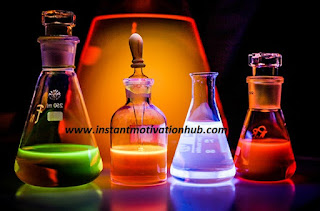Before discussing the procedure for the preparation of reagent, it is pertinent that we are familiar with the measurement system. The mass of a body is defined as the quantity of matter contained in the body and is expressed in kilogramme (kg) while volume is the amount of space occupied by a substance and is expressed in cubic metres (m) smaller units of mass such as grammes (g) and smaller units of volume such as cubic centimeter (cm3) or ml are also used.
Therefore, all solids are measured in grammes, kilogrammes while all liquids are measured in ml, litres. Weighing balance is used to measure solids while pipette, burette, measuring cylinder are used for measuring liquid.
Normally,
the stock solution is diluted with water at a particular concentration. Concentration
is the amount of solute in a given volume of the solution.
They
are three basic preparation of reagent in chemistry laboratory. This includes;
Preparation of acid solutions, preparation of basic solution and percentage
solutions.
Preparation of Acid Solution
Before
preparing the acid solution, take note of the Specific gravity, percentage
purity, and the molar mass of the stock solution at the sticker on the bottle
of the stock solution. Specific gravity, percentage purity and molar mass of
widely used acid are given in the table below:
Acid
|
SG
|
% Purity
|
Molar mass
|
% purity
|
g/dm3
|
H2SO4
|
1.84
|
99.9
|
98
|
100
|
1000
|
HCl
|
1.18
|
35.5
|
36.5
|
100
|
1000
|
HNO3
|
1.42
|
69
|
63
|
100
|
1000
|
After
the above is gotten, calculate using the formular
S.G
X g/dm3X %Purity
Molar
mass X 100
1M = 1000/answer above
1M of HCl in 1 litre is therefore;
1.18 X 1000 X 35.5
36.5 X 100
41890
3650
1M=
1000 = 87ml
11.5
1M HCl in 1 litre = 87ml of
conc. Hcl will be diluted with 1000ml of
distilled water.
The 87ml of conc. HCl is turned into
the volumetric flask containing 1000ml of water. Care should be taken not to
turn water into acid to avoid explosion.
Preparation of Basic Solutions
Before measuring the stock material,
take note of the molar mass of the base in question. For example, the molar
mass of NaOH is 40g.
To make the picture clearer, let’s
prepare 1M NaOH in 1 litre
1M of NaOH in litre will be
dissolving 40g of Stock NaOH in 1 litre of distilled water.
1M NaOH in 500ml will be 20g of stock
NaOH in 500ml of distilled water.
Preparation of percentage solutions
This solutions can be acid or base
prepared in terms of percentage. Usually, 1% of a solution will be measuring
1ml for liquid or 1g for solid and dissolving in little water in a volumetric
flask and then continue turning the water until it reaches the 100ml mark.
40% NaOH for example will be
dissolving 40g of NaOH in a little water in a volumetric flask and add more
water until it reaches the 100ml mark.


Comments
Post a Comment
Your comments are highly valued as it will go a long way to help us serve you better.